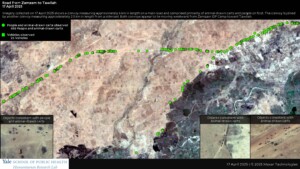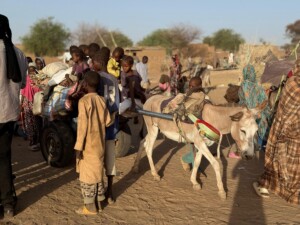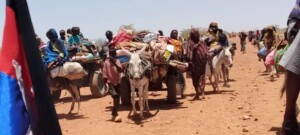Jamal Nasir, Minister of Health of Blue Nile state, reported that the number of victims during the recent clashes has risen to 233 dead, and 217 wounded, many of them suffering from burns.
"This kind of violence is new to the region. Even during the civil war, family homes were not torched in this way," he told Radio Dabanga yesterday.
He said that the rescue teams have not been able to reach all the victims. “There are many injured who have not been treated yet, and we have been unable to remove all the dead.” According to a Radio Dabanga interview with Ramadan Yasin, Commissioner for Humanitarian Aid in the region, on Sunday, it is unclear how many people have died in Medina 3 in the Wad El Mahi governorate as security forces have been unable to enter the area so far.
Hospital transfers
The Health Minister called on the federal government to collaborate with the Blue Nile state Health Ministry, after one of ten seriously wounded who were transferred to Khartoum hospitals was reported dead. He said that the wounded should be brought to the Sudanese capital by air ambulance instead of by road, as the road is poor quality and the distance to Khartoum is too far.
Regional hospitals in Sudan are hardly equipped for treating serious wounds. Even first aid departments lack medical supplies. Seriously wounded patients are almost always transferred to Khartoum, if possible.
The hospitals of Ed Damazin and El Roseires are not only overcrowded with wounded people, but are unable to cope with the serious burns. Ezzeldin Adam Suleiman, Director of the Ministry of Social Welfare and Head of the High Emergency Committee in Blue Nile state, told Radio Dabanga on Sunday that the conditions in the hospitals exceed the capabilities of the Blue Nile state Ministry of Health.
Further displacement
Nasir stated further that about 50,000 people have fled to Ed Damazin and El Roseires after the latest attacks. Many are suffering from malaria, typhoid, anaemia, and heavy colds.
He called on the federal government and relief organizations to provide shelter materials, food, and medicines.
The Sudanese Humanitarian Aid Commission reported that at least 13,000 families fled from Wad El Mahi to Ed Damazin and neighbouring El Roseires since Sunday evening because of the violence.
In Wad El Mahi, near El Roseires in Blue Nile state, inter-communal violence renewed on October 13. According to unconfirmed reports, two people from El Hamaj tribe were killed in a land dispute which led to clashes between the Hausa* community and other tribes.
In an interview with Radio Dabanga last week, Suleiman confirmed the authenticity of images circulated on social media regarding the burned and charred bodies, stating that “a large number of homes were burned during the clashes”.
As a result of the conflict, the governor of Blue Nile state issued a decree prohibiting the movement of civilans driving lorries within big parts of Wad El Mahi locality. "This restriction to freedom of movement prevents people from seeking safety and accessing life-saving services, thereby endangering their right to life," OCHA states.
Governor Ahmed El Omda declared a 30-day state of emergency in Blue Nile state in a press conference on Saturday, one day before demonstrations broke out in the state capital, Ed Damazin, calling for his dismissal.
The violence that erupted in mid-July between El funj, Berta, El Hamaj and Hausa in the northern part of Blue Nile state left at least 105 people dead and caused thousands to flee to the state's capital Ed Damazin and safe parts of El Roseires, flared up in September as well. At least 24 people were killed as the violence resurfaced. At least 149 people died before October 6, according to OCHA.
*The Hausa in Sudan are part of the Hausa ethnic group, which is very influential in West Africa, politically and culturally. In the process of traveling and trading for centuries, some of them migrated east to places like Sudan – where they, as ‘black Africans’, are still seen by many as outsiders.
 Displaced are provided medical support by Doctors Without Borders in Blue Nile state on August 8 following violent clashes in the region (File photo: MSF Sudan)
Displaced are provided medical support by Doctors Without Borders in Blue Nile state on August 8 following violent clashes in the region (File photo: MSF Sudan)











 and then
and then